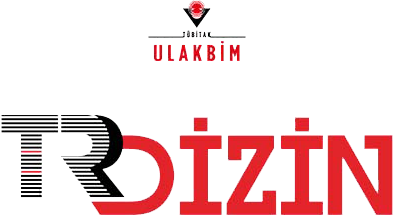
Bu eser Creative Commons Alıntı-GayriTicari-Türetilemez 4.0 Uluslararası Lisansı ile lisanslanmıştır.













Gut artriti ve asemptomatik hiperürisemisi olan bireylerde metabolik sendrom ve biyokimyasal parametrelerin değerlendirilmesi
Perim Fatma TÜRKER1, Gülşen ÖZDURAN2, Mustafa HOCA2, Mehtap AKÇİL OK1, Merve DEMİR ÇELEBİ11Başkent Üniversitesi, Sağlık Bilimleri Fakültesi, Beslenme ve Diyetetik Bölümü, Ankara, Türkiye2Yakın Doğu Üniversitesi, Sağlık Bilimleri Fakültesi, Beslenme ve Diyetetik Bölümü, Lefkoşa, Mersin 10 Türkiye
GİRİŞ ve AMAÇ: Pürin metabolizmasının son ürünü olan ürik asit düzeyinin yüksek olması sonucu ortaya çıkan hiperürisemi, semptom göstermediğinde asemptomatik hiperürisemi (ASH) ve ürat kristalleri oluştuğunda gut artriti (GUT) ile ilişkilidir. Hiperürisemi, metabolik sendrom bileşenleriyle etkileşime girebilir. Bu nedenle çalışmanın amacı, GUT ve ASH’nin metabolik sendromla ilişkisini değerlendirmektir.
YÖNTEM ve GEREÇLER: Bu çalışma, GUT ve ASH tanısı alan 145 birey ile gerçekleştirilmiştir. Genel özellikler, biyokimyasal test sonuçları [serum açlık insülini, açlık kan şekeri, ürik asit ve kan lipitleri (düşük yoğunluklu lipoprotein, toplam kolesterol, trigliserit ve yüksek yoğunluklu lipoprotein gibi)], antropometrik (bel ve kalça çevresi, vücut ağırlığı ve boy uzunluğu) ve kan basıncı (sistolik ve diyastolik) ölçüm sonuçları ile ilgili veriler toplanmıştır. Vücut kompozisyonunu ölçmek için Biyoelektrik İmpedans Analizi kullanılmıştır. Metabolik sendromun saptanmasında Ulusal Kolesterol Eğitim Programı Erişkin Tedavi Paneli III (NCEP-ATP III) tanı kriterleri kullanılmıştır. Hastalardan yazılı bilgilendirilmiş onam formu alınmıştır. Gönüllü olmayan, hamile veya emziren, kanser tanısı almış, kronik böbrek yetmezliği ve kronik karaciğer yetmezliği olan ve diüretik ilaç kullanan kişiler araştırmaya dahil edilmemiştir. Tüm hipotez testlerinin analizlerinde p<0.05 anlamlı olarak kabul edilmiştir.
BULGULAR: GUT grubunda metabolik sendrom prevalansı ASH grubuna göre anlamlı derecede yüksekti (p<0.05). Cinsiyet ve gruplara göre beden kütle indeksi (BKİ) değerleri arasındaki fark kadınlar arasında istatistiksel olarak anlamlı idi (p<0.05). Ortalama vücut yağ yüzdesi değerleri hem GUT hem de ASH grubundaki kadınlarda anlamlı derecede yüksek olarak bulunmuştur (p<0.05).
TARTIŞMA ve SONUÇ: GUT grubunda metabolik sendrom prevalansı anlamlı derecede yüksekti. Ayrıca, kadınlarda BKİ ve vücut yağ yüzdesi değerleri anlamlı derecede yüksekti. Abdominal obezite ve olası hiperinsülinemi, hiperürisemi varlığında daha ciddi sorunlara neden olabilir. Bu nedenle, birden fazla parametrenin (çeşitli biyokimyasal ve antropometrik ölçümler) birlikte değerlendirilmesi gerekmektedir.
Anahtar Kelimeler: Ürik asit, asemptomatik hiperürisemi, gut, metabolik sendrom
Evaluation of metabolic syndrome and its biochemical parameters in individuals with gouty arthritis and asymptomatic hyperuricemia
Perim Fatma TÜRKER1, Gülşen ÖZDURAN2, Mustafa HOCA2, Mehtap AKÇİL OK1, Merve DEMİR ÇELEBİ11Başkent University, Faculty of Health Sciences, Department of Nutrition and Dietetics, Ankara, Turkey2Near East University, Faculty Of Health Sciences, Department Of Nutrition And Dietetics, Nicosia, Mersin 10 Turkey
INTRODUCTION: Hyperuricemia, which occurs as a result of high uric acid levels, the end product of purine metabolism, is related with asymptomatic hyperuricemia (ASH) when it does not show symptoms and gouty arthritis (GOUT) when urate crystals occur. Hyperuricemia may interact with metabolic syndrome components. Therefore, the aim of the study was to assess the relationship of GOUT and ASH with metabolic syndrome.
METHODS: The study was conducted with 145 individuals diagnosed with GOUT and ASH. Data on general characteristics, biochemical test results (serum fasting insulin, fasting blood glucose, uric acid, and blood lipids (such as low-density lipoprotein, total cholesterol, triglyceride, and high-density lipoprotein)), anthropometric (waist and hip circumferences, body weight and height) and blood pressure (systolic and diastolic) measurement results were collected. Bioelectrical Impedance Analysis was used to measure body composition. The National Cholesterol Education Program-Adult Treatment Panel III (NCEP-ATP III) diagnostic criteria were used for the detection of metabolic syndrome. Written informed consent form was obtained from patients. Patients who were not volunteers, who were pregnant or lactating, diagnosed with cancer, chronic renal failure, chronic liver failure, and individuals using diuretic drugs were not included in the research. In the analyses of all hypothesis tests, p<0.05 was accepted significant.
RESULTS: The metabolic syndrome frequency was significantly higher in the GOUT group than in the ASH group (p<0.05). The difference between body mass index (BMI) values according to gender and groups was statistically significant among women (p<0.05). Mean body fat percentage values were significantly higher in women in both GOUT and ASH groups (p<0.05).
DISCUSSION AND CONCLUSION: The frequency of metabolic syndrome was significantly higher in the GOUT group. In addition, BMI and body fat percentage values were significantly higher in women. Abdominal obesity and possible hyperinsulinemia may cause more serious problems in the presence of hyperuricemia. Therefore, multiple parameters (various biochemical and anthropometric measurements) should be evaluated together.
Keywords: Uric acid, asymptomatic hyperuricemia, gout, metabolic syndrome
Makale Dili: İngilizce
(457 kere indirildi)


